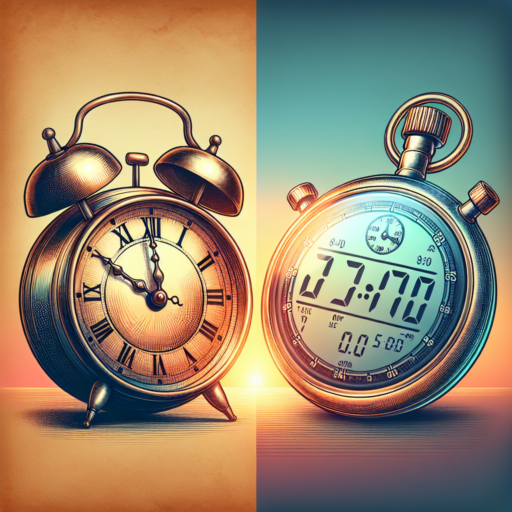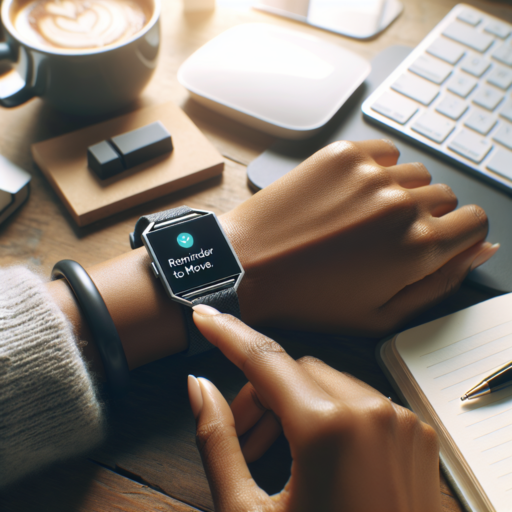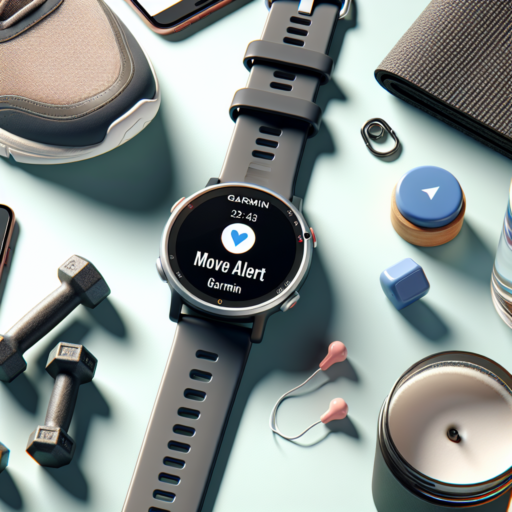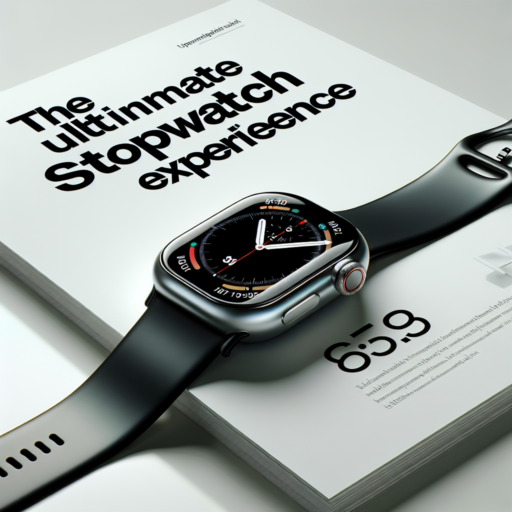No se han encontrado productos.
Introducing Alarm and Stopwatch: Your Time Management Heroes
Discover the unparalleled value of integrating both an alarm and a stopwatch into your daily schedule. These tools are not just gadgets that keep track of time; they are your partners in mastering time management. By understanding and utilizing their full potential, you can transform your routine, enhance productivity, and even find that elusive balance between work and leisure.
Alarms are typically viewed in the context of waking up, but their utility extends far beyond the morning start. They can be set to remind you of appointments, deadlines, and even to prompt regular breaks to keep your mind fresh and avoid burnout. The key is leveraging their flexibility to suit your individual needs. Whether you’re a freelancer juggling multiple projects or a student managing study schedules, setting strategic alarms can keep you on track without feeling overwhelmed.
Similarly, a stopwatch isn’t just for athletes or gaming enthusiasts. It’s a powerful tool for anyone looking to refine their efficiency in various tasks. Implementing timed sessions for focused work followed by short breaks—often referred to as the Pomodoro Technique—can significantly increase productivity and reduce the temptation to procrastinate. Tracking your activities with a stopwatch helps in identifying time sinks and optimizing your daily routine for better time management.
Key features to look for
- Customizable alarm tones: Choose a sound that motivates you to start your day or task.
- Timer options: Look for a stopwatch with various timer options to accommodate different types of tasks.
- Repeat settings: Alarms with repeat settings are invaluable for establishing a consistent routine.
How to Choose the Best Alarm and Stopwatch App for Your Needs
Finding an alarm and stopwatch app that suits your needs can seem daunting with so many options available. The key is to prioritize your requirements and look for features that will enhance your daily routine. Whether you need a simple timer to keep track of your cooking or a sophisticated system for managing your workouts, understanding what to look for makes all the different.
Identify Your Must-Have Features
Start by listing your non-negotiable features. Some users might prioritize customizable alarm tones or the ability to set multiple alarms at various intervals, while others may need advanced stopwatch functionalities like lap times or countdown timers. Consider how you plan to use the app and look for features that align with your activities.
Consider Usability and Interface
The app’s usability and design are crucial for a smooth experience. An intuitive interface allows you to set your alarms and timers quickly, without fumbling through complex menus. Look for apps that offer a clean, straightforward design and, preferably, tutorial guidance for new users. This aspect is especially important if you need to access the app features swiftly, such as when tracking workouts or cooking times.
Top Features to Look for in an Alarm and Stopwatch Application
When selecting an alarm and stopwatch application, the sheer variety of options can be overwhelming. However, focusing on a few key features can significantly enhance your productivity and time management. Not only should the app be user-friendly, but it should also incorporate advanced functionalities that cater to your specific needs. Here, we delve into the essential attributes that set the best timers apart.
Customization Options
One of the top features to consider is customization. The ability to personalize alarm tones, volume, and snooze intervals makes a huge difference in how effective the app is in waking you up or reminding you of tasks. Moreover, a robust stopwatch application should allow users to customize the display and layout to their preferences, ensuring that the interface is both intuitive and enjoyable to use.
Multiple Timers and Alarms
An app that supports multiple timers and alarms can be a lifesaver for those with a packed schedule or those needing to manage various tasks simultaneously. Whether it’s setting up different alarms for gym sessions, meetings, or medication reminders, having the ability to manage multiple alerts ensures you stay on top of your day without constantly resetting your device. Additionally, for athletes or professionals conducting time-based exercises or tasks, the possibility to run several stopwatches concurrently provides unmatched flexibility and efficiency.
Integrated Time Zone Support
For individuals who travel frequently or work with teams across the globe, integrated time zone support is invaluable. This feature minimizes the risk of missing important calls or deadlines due to time zone miscalculations. An effective alarm and stopwatch application should offer seamless time zone conversion features and the ability to set alarms based on different time zones, ensuring you’re always synchronized with your international commitments.
Step-by-Step Guide on Setting Up Your Alarm and Stopwatch
Understanding the Basics of Your Device
Before diving into the specifics of setting up your alarm and stopwatch, it’s crucial to familiarize yourself with the basic functionalities of your device. Most smartphones and digital watches come equipped with built-in alarm and stopwatch features, accessible through their respective applications or settings. Navigating to these features often involves opening the clock application, where you will find separate tabs or options for the alarm and stopwatch respectively.
Setting Up the Alarm
To set up an alarm, start by opening the alarm function within your device’s clock application. Here, you’ll find an option to add a new alarm. Customize your alarm by selecting the specific time you’d like to wake up or be reminded. Modern devices also allow you to choose different alarm tones, set repeating alarms for certain days of the week, and even label your alarms for different purposes. It’s vital to ensure that your device’s volume is adequately set up so that the alarm tone is audible.
Using the Stopwatch
For accessing the stopwatch, navigate back to the clock application and select the stopwatch function. Starting the stopwatch is as simple as tapping the ‘start’ button. Your device will begin counting the time elapsed, offering you the ability to stop, pause, or add laps if supported by your device. Using the stopwatch is invaluable for tracking time during exercises, cooking, and performing timed tests. The interface is usually straightforward, displaying the elapsed time in hours, minutes, seconds, and sometimes even milliseconds.
The Benefits of Using an Alarm and Stopwatch Daily
Integrating an alarm and stopwatch into our daily routine can vastly improve our productivity and well-being. These simple yet powerful tools can be our allies in managing our time more effectively. From ensuring we wake up on time to helping us maintain focus during tasks, their benefits are manifold.
Enhanced Time Management
One of the key advantages of utilizing an alarm and stopwatch on a daily basis is the significant improvement in time management skills. By setting alarms, we can adhere to a strict schedule, ensuring that every hour of our day is accounted for and utilized efficiently. Similarly, using a stopwatch during tasks can help in minimizing distractions, allowing us to focus and complete our work within set timeframes. This not only boosts our productivity but also allows for a well-balanced life, dedicating time to both work and leisure.
Improving Sleep Quality
Regular use of alarms is not just about waking up early; it’s also about establishing a consistent sleep schedule. This consistency is key to improving the quality of our sleep. By going to bed and waking up at the same time every day, our body adapts to a routine, enhancing our natural sleep cycles. Better sleep quality leads to improved mood, higher energy levels, and stronger mental health, underlining the importance of a disciplined sleep schedule.
Alarm and Stopwatch: From Workouts to Wake-Ups
Alarm clocks and stopwatches have transcended their mere functional roles, becoming indispensable tools in our daily lives. From helping us manage our workouts to ensuring we wake up on time, these devices play a pivotal role in maintaining our schedules and enhancing our productivity. The evolution of these tools from mechanical wonders to digital marvels has only expanded their utility and integration into our routines.
For fitness enthusiasts, the stopwatch function is crucial in tracking performance and setting new personal records. Whether timing laps around the track or counting down during high-intensity interval training (HIIT) sessions, the accuracy and reliability of a good stopwatch can significantly impact training outcomes. It’s not just about measuring time; it’s about pushing boundaries and achieving goals.
On the other hand, the alarm clock is synonymous with the start of a new day. Its significance goes beyond just waking us up; it’s about ensuring we start our day right. With the advent of smart alarms that analyze sleep patterns to wake you at the optimal time, the traditional alarm clock has been transformed into a device that can improve sleep quality and, by extension, our overall health and well-being.
The interplay between alarm clocks and stop withches in our daily routine underscores a balance between rest and activity. Leveraging these tools effectively can enhance time management, boost productivity, and encourage a healthier lifestyle. As we continue to integrate these devices into our lives, their impact extends far beyond their initial purpose, demonstrating the profound influence technology has on our daily routines.
Combining Productivity and Punctuality with Alarm and Stopwatch
In the fast-paced world we live in, managing time efficiently has become an indispensable part of our daily routine. The fusion of productivity and punctuality can significantly enhance our day-to-day activities, allowing for a more organized and stress-free lifestyle. Fortunately, the integration of alarm and stopwatch functionalities in our digital devices serves as a robust mechanism to foster this blend.
Alarms, with their basic yet potent ability to remind us of specific tasks at predetermined times, play a pivotal role in reinforcing punctuality. Whether it’s waking up early in the morning, taking medication on time, or not missing an important meeting, setting alarms can be a life-saver. On the other hand, stopwatches go beyond mere timekeeping. They are instrumental in tracking the duration of activities, promoting time management, and enhancing productivity. By measuring how long a task takes, individuals can identify areas of inefficiency, allocate their time more effectively, and set realistic deadlines that pave the way for achieving goals with precision.
The synergy between alarms and stopwatches extends to various facets of personal and professional life. For instance, in a work setting, you might use a stopwatch to practice timed presentations or allocate fixed periods for brainstorming sessions to boost creativity. Simultaneously, alarms can serve as reminders for breaks to ensure you’re not overworking, thus maintaining a healthy work-life balance. Utilizing these tools in tandem can help manage time effectively, allowing you to stay on top of your schedule without compromising on productivity or punctuality.
Troubleshooting Common Issues with Alarm and Stopwatch Apps
Experiencing issues with your alarm and stopwatch apps can disrupt your schedule and lead to frustration. Fortunately, most problems can be resolved with a few troubleshooting steps. This guide will explore some common issues and provide straightforward solutions to get your apps running smoothly again.
Ensuring Accurate Time Settings
Incorrect time settings are a primary cause of malfunction in alarm and stopwatch apps. Whether it’s due to traveling across time zones or daylight saving adjustments, ensuring your device’s time settings are accurate is crucial. To address this, manually check your device’s time and date settings. For Android and iOS, navigate to the ‘Settings’ app and adjust the ‘Date & Time’ to either set automatically or manually input the correct details.
App Permissions and Notifications
Missing an alarm can also result from improper app permissions or notification settings. Alarm and stopwatch apps require certain permissions to function effectively. Verify that your app has access to notifications, background activity, and any other permissions it requests. On your device, go to ‘Settings’, find the app in question, and ensure all necessary permissions are granted. Additionally, check your device’s ‘Do Not Disturb’ settings to make sure alarms are allowed to sound.
Lastly, keeping your apps up-to-date is essential for optimal performance. Developers regularly release updates to fix bugs and improve functionality. If you’re encountering issues, visiting your app store and checking for an available update can provide an easy fix. Remember, a well-maintained app is less likely to encounter performance issues and will provide a more reliable service.
Alarm and Stopwatch Integration: Syncing with Other Apps and Devices
In the ever-evolving world of technology, the integration of alarm and stopwatch functions with other apps and devices has become an indispensable feature for many users. Connecting these basic tools with other software and hardware enhances functionality, offering a seamless experience that can significantly improve productivity and personal organization. This synchronization capability bridges the gap between simple time-tracking and complex scheduling needs.
One of the primary advantages of alarm and stopwatch integration is the ability to trigger actions in connected devices or applications. For instance, starting a workout on a fitness app can automatically activate a stopwatch on a smartwatch, while an alarm on a phone could turn on smart lights in the morning. This level of interconnectivity ensures that users can create a highly efficient and personalized ecosystem of devices and apps working together in harmony.
Furthermore, the synchronization with other apps and devices often involves shared data, enhancing the user’s experience by providing detailed insights and analytics. For athletes, this might mean getting detailed reports on their performance directly linked to the time tracked by their stopwatch. For those with hectic schedules, alarms can sync with calendar apps to remind of important meetings or tasks, ensuring nothing is missed. This integration fosters a smarter, more connected environment, adapting to the individual’s lifestyle and preferences.
The Future of Time Management: Trends in Alarm and Stopwatch Technology
Integration of Artificial Intelligence
The evolving landscape of time management is witnessing a significant shift towards the integration of artificial intelligence (AI) in alarm and stopwatch technology. This trend is not only about setting alarms or timing events but also about creating smart systems that understand and adapt to individual routines. AI-enhanced alarms could analyze sleep patterns for optimizing wake-up times, ensuring a more natural and refreshing start to the day. Similarly, stopwatches are getting smarter, offering precise measurements tailored to the user’s specific activities, improving efficiency in time management practices.
Wearable Technology and Time Management
The proliferation of wearable technology is another trend shaping the future of alarm and stopwatch functionalities. Smartwatches and fitness trackers integrate these features, making them more accessible and offering a seamless way to manage and measure time. These devices are not merely about telling time or setting simple reminders but are becoming vital tools for health management, productivity, and personal scheduling. Their capability to sync with mobile devices and other smart technologies enhances user experience by offering a holistic view of one’s time and activities.
Customization and User Experience
As we move towards a more connected and personalized world, the demand for customization in alarm and stopwatch technology is increasing. Users now expect these tools to be more than generic; they want devices that cater to their specific needs and lifestyles. Features such as voice recognition, customizable alarm tones, and adaptive timing functions are becoming standard. This shift towards personalized user experiences signifies a broader trend in technology, emphasizing the importance of tailoring products to suit individual preferences and requirements, thereby transforming the way we interact with time.




